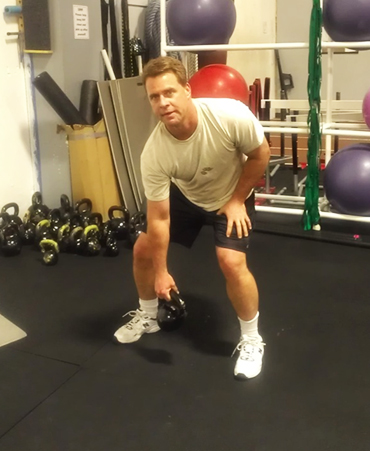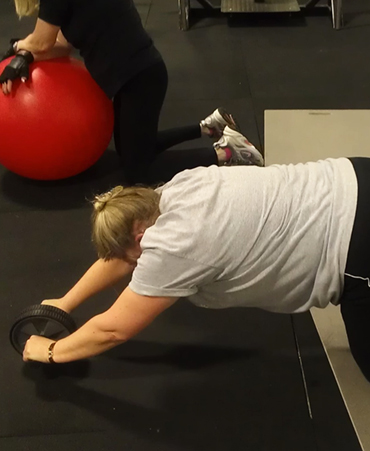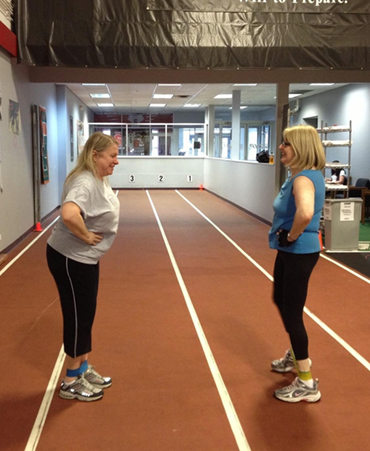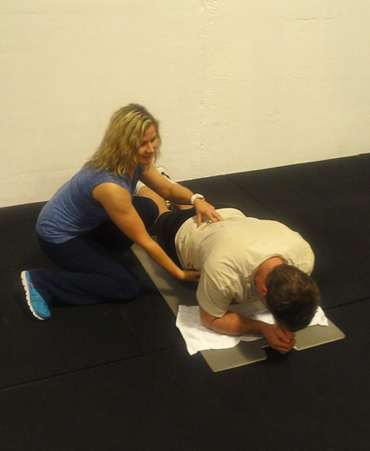What You Eat in Private Shows in Public. How does your diet look on YOU?
- While many people pursue weight training to pack size onto their frames, it can also be used for fat loss. Working out with weights burns a lot of calories and can help you obtain a toned, slim physique. Choosing the right weight training exercises will make the most of your time and burn fat much faster than dieting alone.
BENEFITS
You may not realize it, but weight training is a potent fat loss tool. The key to losing weight is burning more calories than you consume, and working with weights can help you do that. According to the calorie expenditure tool at NutriStrategy, lifting weights burns more than 500 calories per hour.
In addition, weight training helps maintain and build muscle. When you're in a calorie deficit, weight training will ensure that your body burns fat, not muscle. And building muscle speeds up your metabolism, as it requires more calories to maintain than fat. The more muscle you build, the more calories you'll burn, even at rest.
Heavy Weights vs. Light Weights
Lifting heavy is a popular approach for body builders, so many people trying to lose fat rather than gain mass lift lighter weights and focus on a high number of repetitions. According to recent research, that's not the most effective way to burn fat.
A study published in the journal Medicine and Science in Sports and Exercise found that a workout using fewer repetitions and heavier weights burned nearly twice the calories during a post-exercise rest period than the same workout with more repetitions and lighter weights.
Be sure to have a spotter with you when working with heavy weights.
Physical Fitness
If you're out of shape, the idea of becoming physically fit might seem overwhelming. Fortunately, it is possible to get into shape by starting slowly and gradually increasing the amount of exercise you do. To become physically fit, do a combination of cardiovascular exercise and strength-training. Cardio work strengthens the heart and lungs and helps you keep your weight under control. Strength-training strengthens the bones and muscles, and prevents loss of muscle mass that naturally occurs as part of aging.
Americans are out of shape. There are many different definitions of being out of shape, including being overweight, being underweight and frail or suffering from underdeveloped muscles. Being in shape means you can engage in physical activity without suffering from shortness of breath, elevated blood pressure and pounding heart. According to a report from the Centers for Disease Control and Prevention, almost four in 10 American adults engage in no leisure-time physical activity. This same report reveals that nearly six in 10 adults were overweight or obese. Less than 2 percent of Americans are underweight. Getting back in shape takes time and dedication.
Most experts agree that a balanced diet and adequate exercise are keys to good health. The United Stated Department of Agriculture provides a Food Guide Pyramid, which highlights what you need to eat for a balanced diet. The American College of Sports Medicine recommends at least 30 minutes of cardiovascular exercise most days of the week and weight training at least two days a week. Knowing these guidelines, however, is only half the battle. For many of us, the problem lies in applying these principles to our daily lives. That’s why it is good to hire a personal trainer who can help you to stay motivated, have a plan for you and supports you on a path to a better health.
EAT THE RIGHT DIET
Step 1:
Divide your plate into three sections. Separate half and divide one of the halves into two equal sections. Fill the largest section with vegetables and the two smaller sections with your protein and carbohydrates.
Step 2:
Use lean cuts of meat. Try loin cuts, and have the butcher remove excess fat. Or, remove the excess fat yourself prior to cooking. Excess fat includes the fat around the edges of cuts of meat as well as the skin.
Step 3:
Avoid friend and fatty restaurant foods. Watch for crispy, crunch, fried or smothered in the description. Opt for baked, steamed or grilled menu items, and ask for no butter or oil.
Step 4:
Eat whole, unprocessed foods. The more processing a food has, the lower the nutritional value. For example, opt for a low-fat granola instead of a boxed breakfast cereal.
Step 5:
Aerobic exercise has shown to be an important means of preventing and treating non-insulin-dependent diabetes by helping regulate blood glucose levels.
Add vegetables to other foods. This will boost the fiber and vitamin content. Throw a handful of frozen vegetables into a pot of canned soup. Add chopped spinach, mushrooms and onions to your chili or spaghetti sauce. Mix peas, carrots and rice together as a side dish. Step 6:
Plan your meals in advance. Knowing what you are going to eat makes you less likely to "wing" it with less healthy options.
Step 7:
Eat at regular intervals. This keeps your blood sugar level and prevents you from overeating at the end of the day.
Exercise Enough







© 2019 Body By Beata. All rights reserved. Developed by Kyle Rev Miller Media.